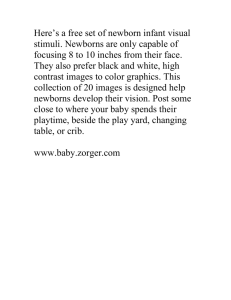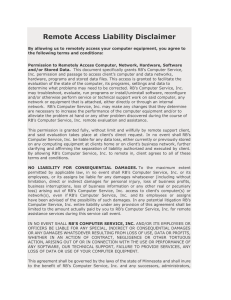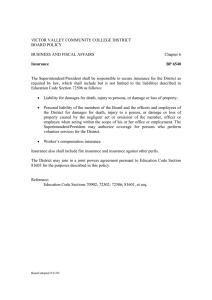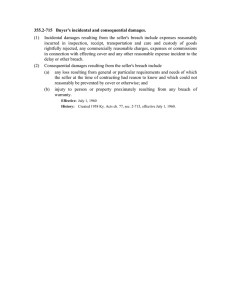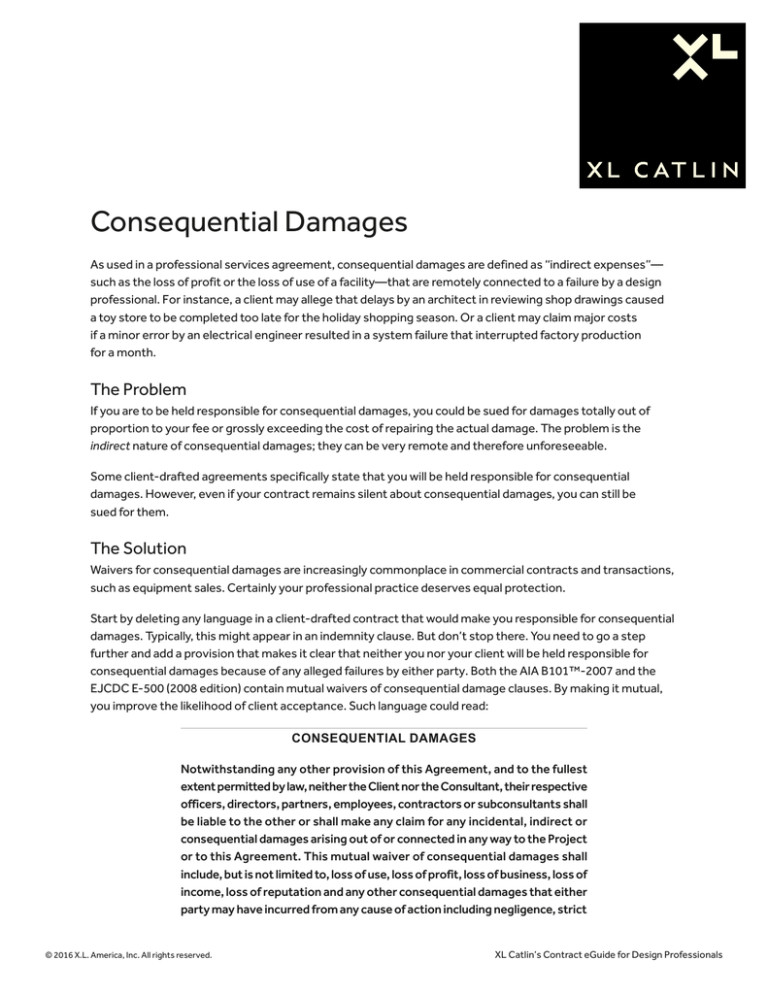
Consequential Damages
As used in a professional services agreement, consequential damages are defined as “indirect expenses”—
such as the loss of profit or the loss of use of a facility—that are remotely connected to a failure by a design
professional. For instance, a client may allege that delays by an architect in reviewing shop drawings caused
a toy store to be completed too late for the holiday shopping season. Or a client may claim major costs
if a minor error by an electrical engineer resulted in a system failure that interrupted factory production
for a month.
The Problem
If you are to be held responsible for consequential damages, you could be sued for damages totally out of
proportion to your fee or grossly exceeding the cost of repairing the actual damage. The problem is the
indirect nature of consequential damages; they can be very remote and therefore unforeseeable.
Some client-drafted agreements specifically state that you will be held responsible for consequential
damages. However, even if your contract remains silent about consequential damages, you can still be
sued for them.
The Solution
Waivers for consequential damages are increasingly commonplace in commercial contracts and transactions,
such as equipment sales. Certainly your professional practice deserves equal protection.
Start by deleting any language in a client-drafted contract that would make you responsible for consequential
damages. Typically, this might appear in an indemnity clause. But don’t stop there. You need to go a step
further and add a provision that makes it clear that neither you nor your client will be held responsible for
consequential damages because of any alleged failures by either party. Both the AIA B101™-2007 and the
EJCDC E-500 (2008 edition) contain mutual waivers of consequential damage clauses. By making it mutual,
you improve the likelihood of client acceptance. Such language could read:
CONSEQUENTIAL DAMAGES
Notwithstanding any other provision of this Agreement, and to the fullest
extent permitted by law, neither the Client nor the Consultant, their respective
officers, directors, partners, employees, contractors or subconsultants shall
be liable to the other or shall make any claim for any incidental, indirect or
consequential damages arising out of or connected in any way to the Project
or to this Agreement. This mutual waiver of consequential damages shall
include, but is not limited to, loss of use, loss of profit, loss of business, loss of
income, loss of reputation and any other consequential damages that either
party may have incurred from any cause of action including negligence, strict
© 2016 X.L. America, Inc. All rights reserved.
XL Catlin’s Contract eGuide for Design Professionals
Consequential Damages
2
liability, breach of contract and breach of strict or implied warranty. Both
the Client and the Consultant shall require similar waivers of consequential
damages protecting all the entities or persons named herein in all contracts
and subcontracts with others involved in this project.
Even if you have (and you should) a Limitation of Liability clause in your contract, you could still be held
responsible for the entire negotiated limit of liability despite the size of your fee or the price tag on the
actual damage. (See Limitation of Liability for discussion.) Having a negotiated limit of liability does not take
the place of the additional protection against liability for consequential damages. Be sure the Limitation of
Liability and Consequential Damages clauses are coordinated with each other and are enforceable in your
jurisdiction. (Talk to your attorney about this.) Remember, too, that both of these clauses apply only to claims
between you and your client. Third-party claims will not be subject to these protections.
You may well find that your private-sector clients are used to discussing consequential damage issues. Many
of them may ask for this protection when they are the sellers of products or services, so requesting the same
protection for yourself is rarely offensive to a sophisticated client. Your clients should appreciate that you are
willing to assume direct responsibility for your services in a reasonable measure but will not accept liability
that is too remote, indirect, grossly out of proportion to your fee or unlimited.
See Also
Delays
Electronic Information
Electronic Files
Fiduciary Duty
Limitation of Liability
Timeliness of Performance
Design Professional unit
The information contained herein is intended for informational purposes only and does not constitute legal advice. For legal advice, seek the services of a competent attorney. Any descriptions
of insurance provisions are general overviews only. THE INSURANCE POLICIES, NOT THIS DOCUMENT, FORM THE CONTRACT BETWEEN THE INSURED AND THE INSURANCE COMPANY.
The policies contain limits, exclusions and conditions that are not listed in this document. All coverages are subject to individual underwriting judgments and to state legal requirements.
“XL Group” is the global brand used by XL Group plc’s insurance subsidiaries. In the U.S., coverages are underwritten by the following XL Group plc insurance companies: Catlin Indemnity Company,
Catlin Insurance Company, Inc., Catlin Specialty Insurance Company, Greenwich Insurance Company, Indian Harbor Insurance Company, XL Insurance America, Inc., XL Insurance Company of New York, Inc.,
and XL Specialty Insurance Company.
Not all of the insurers do business in all jurisdictions, nor is coverage available in all jurisdictions.
Published by the Design Professional unit of XL Catlin 30 Ragsdale Drive, Suite 201, Monterey, CA 93940-7811 800 227 8533 x210-2524 xlcatlin.com/dp
is a trademark of XL Group plc companies
© 2016 X.L. America, Inc. All rights reserved.
XL Catlin’s Contract eGuide for Design Professionals

